Turnips are grown as a root vegetable or for their green leaves, Turnips are a cool-season crop; they grow and taste best when they come to harvest in cool weather.
The turnip is a hardy, cool-weather biennial grown as an annual. The turnip has a rosette of bright green, wavy-edged leaves that grow to 12 inches long or more. Below the leaves, a swollen taproot can be creamy white, soft yellow, purple, or red. The flesh of the root is white.
Related articles:
- Eight Ways to Cook and Serve Turnips
- Three Ways to Cook Turnip Greens
- Turnip Seed Starting Tips
- How to Harvest and Store Turnips
- Turnip Growing Problems Troubleshooting
- How to Plant and Grow Turnips
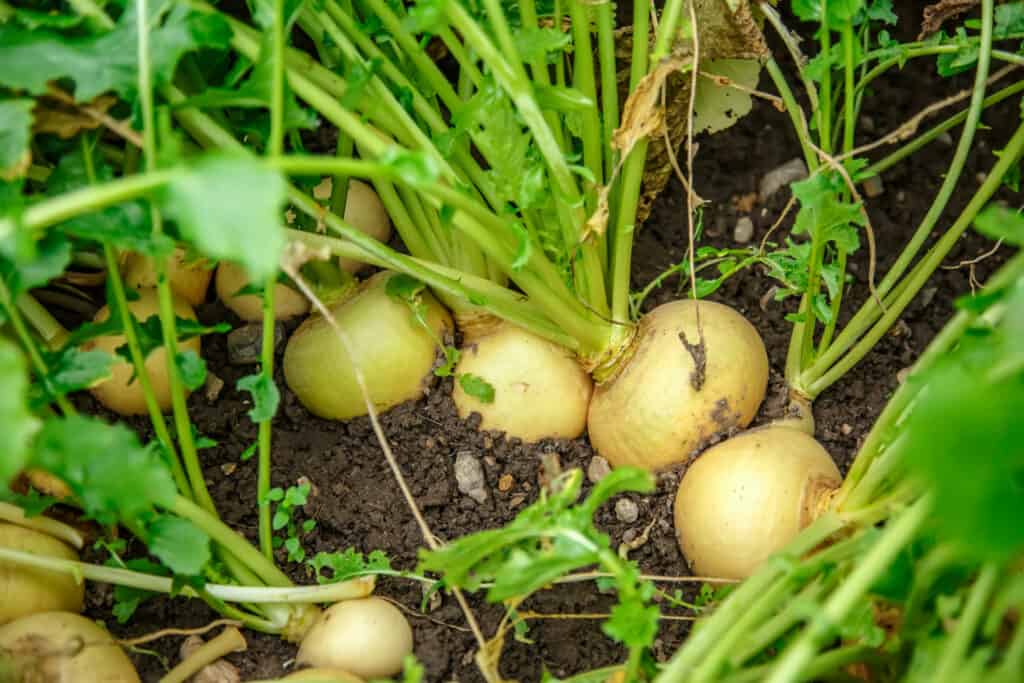
Turnips are closely related to rutabagas; the taste and texture are similar. Turnips are biennials usually grown as short-season annuals while rutabagas are long-season crops. Grow both for a continuous supply of roots and tops.
Here is your complete guide to growing turnips!
Turnip growing quick tips
- For a late spring harvest, sow turnip seeds directly in the garden 2 to 3 weeks before the average last frost date in spring. The soil must be at least 40°F for germination. Seeds will germinate and seedlings will appear in about 7 days.
- Sow turnips in late summer for autumn harvest; in early autumn for late autumn harvest, and in late autumn for winter harvest in reverse-season regions.
- Turnips grow to maturity in 2 to 3 months depending on the variety.
- Turnip yield: plant 5 to 10 plants per household member.
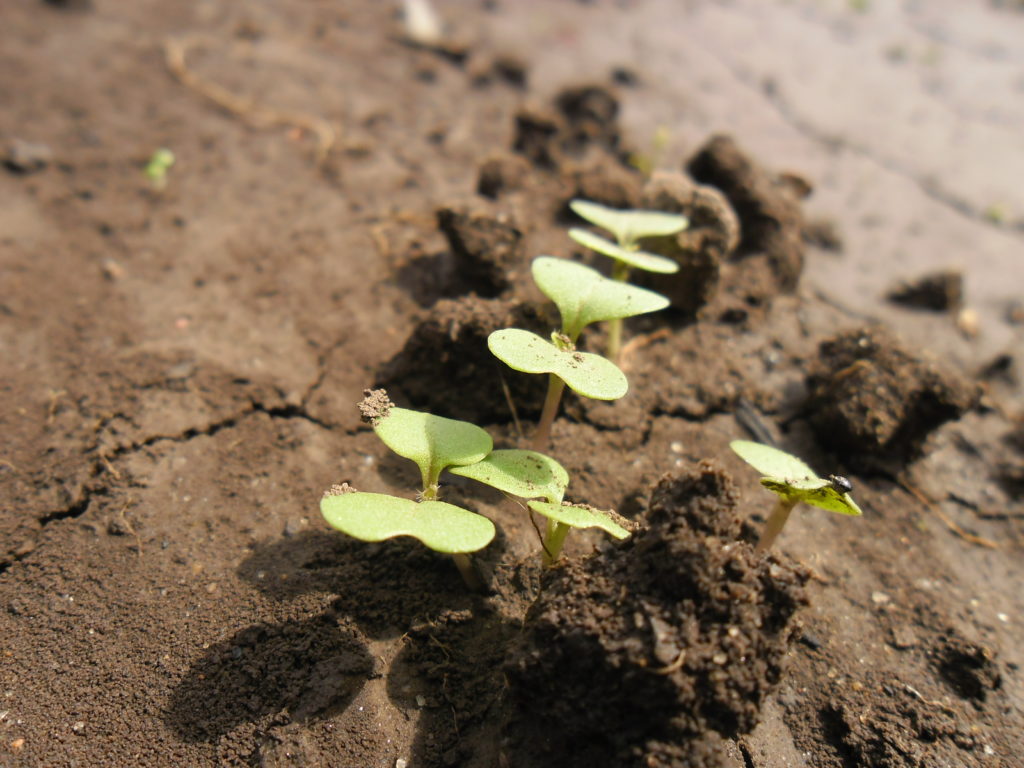
Where to plant turnips
Plant turnips in loose, compost-rich soil free of stones. Keep the soil evenly moist for fast growth; roots will be mild-flavored if the soil is kept moist. Floating row covers installed on the day of sowing will keep turnips free of insect pests. Mulch with loose straw to protect roots from sunburn in summer. Bone meal or other phosphorus fertilizer will improve yield; feed with an organic fertilizer when plants are 5-6” (13-15 cm) high.
- Grow turnips in full sun or partial shade.
- Plant turnips in well-drained soil rich in organic matter with a soil pH of 6.5 to 7.0.
- Prepare planting beds in advance by removing all rocks and obstacles and applying garden compost and well-aged manure. Work the soil to about 8 inches deep then rake it smooth.
- Heavy clay soil can be lightened with the addition of aged compost, sand, and perlite.
- Add sand or gypsum to heavy, clay soil or prepare beds by planting green manure and working it into the beds the season before seeding.
- Add wood ashes to the soil to fend off wireworms.
Turnip planting time
Sow turnips in early spring 4-6 weeks before the last expected frost for a summer harvest. (Sow every 3 weeks until midsummer for a succession of harvests.) Sow 6-8 weeks before the first expected frost in autumn for an autumn and winter harvest.
- Turnips are a cool-weather crop that requires 30 to 60 days to come to harvest.
- Turnips grow best in temperatures from 40°F to 75°F (7-24°C).
- Turnips will have the best flavor and texture when grown quickly at temperatures between 60°F and 65°F.
- Turnips are best harvested before temperatures exceed 75°F (24°C). Hot weather will cause roots to become woody. Turnips also can not withstand heavy frost.
- Sow turnip seeds directly in the garden in early spring 2 to 3 weeks before the average last frost date in spring for a late spring or early summer harvest.
- Make successive plantings every 3 weeks until midsummer.
- For a fall harvest, sow turnip seeds about 9 weeks before the first expected frost.
- Sow turnips in late summer for a fall crop; in early autumn for a late autumn harvest, and in late autumn for winter harvest in reverse-season regions.
- Grow turnips during any time of the year when there are 35 to 50 days of cool weather.
- In short- and medium-season regions, plant turnips in early spring.
- In mild winter regions, plant turnips in fall and overwinter for harvest in spring.
- Indoor seed starting: start turnip seeds 3 to 4 weeks before the frost-free date; handle turnip seedlings gently to avoid disturbing the roots.
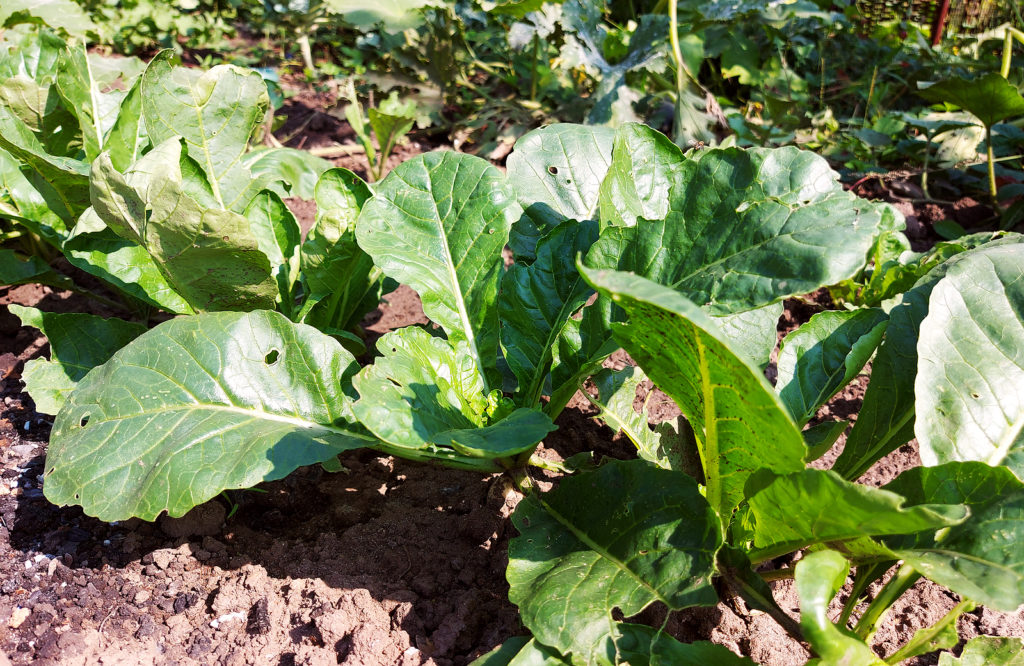
Planting and spacing turnips
Sow turnip seeds ½” (13 mm) deep. Seeds will germinate in 3-10 days in an optimum soil temperature of 60°F (16°C). Space plants 2-6” (5-15 cm) apart for roots; 1-4” (2.5-10 cm) apart for greens.
- Turnips do not transplant well. It is best to direct sow seeds in the garden. Use pathogen-free seed.
- Sow turnip seed directly in the garden ½ inch (12mm) deep and 1 inch (2.5cm) apart in wide rows
- For a succession or staggered harvest of roots, sow seeds every 3 weeks.
- Seeds will germinate at 40°F; the optimal soil temperature for quick germination is 60°F.
- When the first true leaves appear, thin successful seedlings stand 4 to 6 inches (10-15cm) apart for root harvest. Thinnings can be used in salads.
- Grow 9 turnips per square foot.
- Thin turnips being grown for greens from 2 to 3 inches (5-7cm) apart.
- Space rows 12 to 24 inches (30-61cm) apart.
- One gram of seeds will plant 20 feet of row.
Turnip companion plants
- Grow turnips with bush beans, peas, and southern peas.
- Keep turnips away from mustard and potatoes.
- Turnips are closely related to rutabagas; the taste and texture are similar.
- Turnips are short-season crops while rutabagas are long-season crops; plant both crops for a continuous supply of roots and tops.
Container growing turnips
- Small turnip roots can be grown in wide containers at least 8 to 12 inches (20cm) deep.
- Sow seeds 1 inch apart, then thin turnips to 2 inches apart.
- You can grow 3 turnips in a 12-inch pot.
- Turnip greens are easily grown in containers.
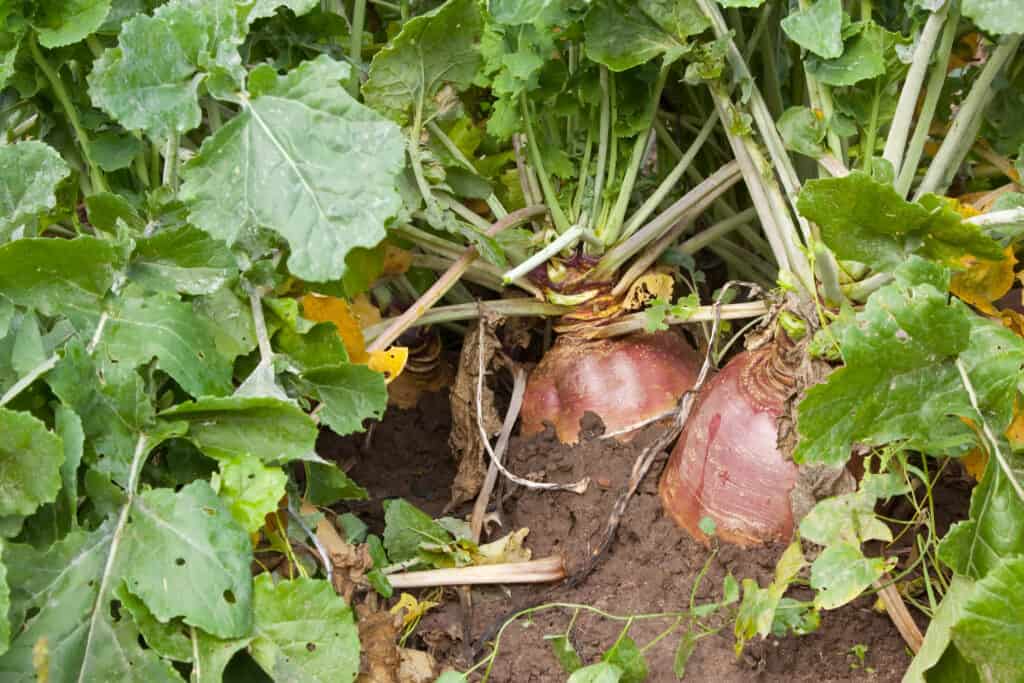
Watering turnips
- Keep the soil moist to keep turnips growing as fast as possible. Do not let the soil dry out. Growth becomes checked if the soil dries out.
- Lack of moisture will cause turnip root growth to slow; roots will become woody and strong flavored if growth is not quick and consistent.
- Water at the base of plants; overhead watering will leave turnip tops, and turnip leaves susceptible to fungal diseases.
- Give turnips from 1 inch to 2 inches of water each week. One inch of water equals 16 gallons (60.5 liters).
Feeding turnips
- Side dress plants with well-aged compost at planting time and again at midseason.
- Side-dress turnips with aged compost or apply manure tea at midseason.
- Turnips can be fed with a mild, balanced, all-purpose organic fertilizer with an NPK of 5-10-10. Fertilizer can be added to the soil ahead of planting or as a side dressing when plants are about 6 inches tall. Follow the label directions when applying fertilizer.
- If you are growing only turnip green, fertilize with a nitrogen-rich liquid fertilizer such as fish emulsion.
- Avoid feeding turnips with a high-nitrogen fertilizer which will aid green growth but not root growth.
Turnip care
- Keep planting beds weed-free.
- Overcrowding turnips may cause small roots.
- Mulch turnips with straw to protect the root tops from sunburn and to conserve soil moisture.
Turnip pests
- Turnips can be attacked by cutworms, cabbage loopers (caterpillars preceded by small yellow and white moths), imported cabbage worms, cabbage root maggots, slugs, and aphids.
- Place a protective collar around young plants to exclude cutworms.
- Handpick loopers and worms destroy them or spray with insecticidal soap or Bacillus thuringiensis.
- Cabbage root maggots are the larvae of a fly. Plant radishes near turnips to repel the flies. Place row covers over seedlings or set the plants through the garden fabric to keep flies from laying eggs in the soil. Mound diatomaceous earth or hot pepper around stems if maggots are in the soil. You can also mix wood ash into the soil near the roots.
- Cabbage worms are moth larvae; control them with Bacillus thuringiensis. Use row covers to exclude the moths from laying eggs on the plants.
- Turnips can be attacked by cutworms, cabbage loopers (caterpillars preceded by small yellow and white moths), imported cabbage worms, cabbage root maggots, slugs, and aphids.
- Place a protective collar around young plants to exclude cutworms.
- Handpick loopers and worms destroy them or spray with insecticidal soap or Bacillus thuringiensis.
- Cabbage root maggots are the larvae of a fly. Plant radishes near turnips to repel the flies. Place row covers over seedlings or set the plants through the garden fabric to keep flies from laying eggs in the soil. Mound diatomaceous earth or hot pepper around stems if maggots are in the soil. You can also mix wood ash into the soil near the roots.
- Cabbage worms are moth larvae; control them with
- Moths, butterflies, and flies that lay eggs on or near turnip tops can be excluded from the crops with a horticultural fleece row cover.
- Cutworms and flea beetles will attack young plants.
- Flea beetles nibble small holes in young leaves; attacks are worse in dry weather; keeping the soil moist will deter attacks. Sprinkle leaves with diatomaceous earth.
- Mealy aphids are gray-green, waxy-looking aphids that suck juices from leaves; squash by hand or introduce ladybugs into the garden.
- A cabbage whitefly is a small white insect; spray with insecticidal soap or Bacillus thuringiensis.
- Caterpillars are the larvae of various types of cabbage white butterflies and moths; these pests eat holes in leaves; insecticidal soap or Bacillus thuringiensis.
- Cabbage root fly: these adult flies lay eggs at the base of young brassica plants; hatched grubs tunnel into roots causing plants to collapse; exclude the flies with row covers; dig up and dispose of collapsed plants.
- Wireworms are click beetle larvae 1/2 to 3 inches long; they bore holes into roots. Control wireworms with pyrethrin or the addition of wood ash to the soil. To know if you have wireworms, place a cube of potato tuber in the soil 4 inches deep and check back in a week. Wireworms can live in the soil for up to 6 years; turn the soil in winter to expose larvae to killing winter cold.
- Slugs and snails eat ragged holes in leaves; handpick and destroy these pests.
- Birds can attack young seedlings; protect seedlings with netting or row covers.
- To deter insect pests, plant thyme alongside broccoli in a row about 6 inches away. You can also spray plants with a mix of boiled onion and garlic.
- Introducing beneficial insects such as ladybugs and green lacewings can keep pest insects under control.
- Keep weeds in the garden down to control flea beetles.
Turnip diseases
- Turnips are susceptible to cabbage family diseases including yellows, clubroot, powdery mildew, and downy mildew.
- Plant disease-resistant varieties, rotate crops each year, and keep the garden free of debris to cut back the incidence of disease.
- Remove and destroy infected plants immediately.
- Black rot, also called blackleg, clubroot, and yellows are fungal diseases that can attack cabbage
- Blackleg leaves yellow, V-shaped lesions on leaf edges. Plants with clubroot wilt and look stunted; there will be galls on the roots. Cabbage yellows are marked by the yellowing of lower leaves.
- Blackleg, bacterial blight: control diseases through crop rotation; collect and burn or dispose of in the trash can plant material after harvest.
- Clubroot (Plasmodiophora brassicae) is a soil-borne disease that results in root swelling followed by yellow leaves, the collapse of the plant, and death. Lift the entire plant and dispose of it in the trash or burn it; do not compost diseased plants.
- White rust (Albugo candida) causes small white cottony blisters on the upper surface of leaves and a yellow discoloration on the undersides. Control is not necessary.
- The Mosaic virus causes leaves to become mottled with white spots. The Mosaic virus is spread by aphids. Remove infected plants and plant them in the trash, not the compost pile.
- Downy mildew and yellows can also afflict broccoli plants.
- To avoid fungal diseases plant disease-resistant varieties or seeds that have been hot water treated. Plant in well-drained soil. Water with compost tea.
- Remove and destroy diseased plants immediately.
- Rotate crops on a three-year cycle.
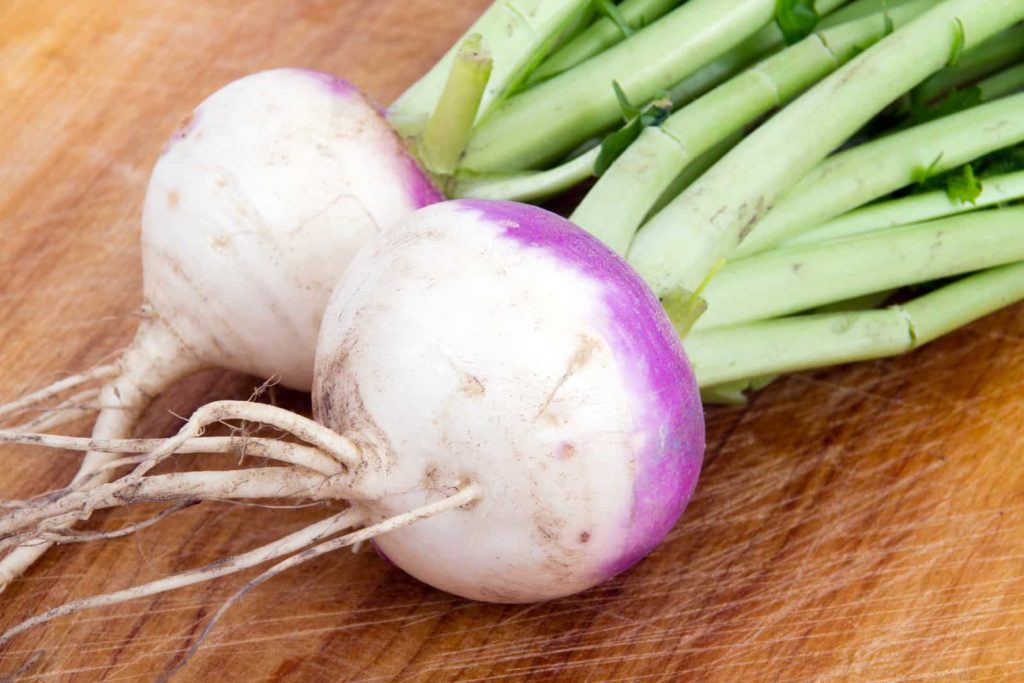
Harvesting turnips
Turnips will be ready for harvest 30 days after sowing—full size in 40 days. Roots are smoothest when small. Harvest can begin when greens are 12” (30 cm) long and roots are 2-3” (5-7.5 cm) in diameter.
For greens, harvest the outside leaves, leaving the central growth bud to re-sprout. Do not leave turnips in the ground past maturity; this will cause turnips to become woody and lose flavor.
- Turnips come to harvest 30 to 60 days after sowing.
- Harvest turnips while young and succulent. A turnip about golf ball size will be the most succulent and best flavored.
- If you are growing turnips only for the greens, turnip greens can be harvested as soon as they are edible size, about 4 inches tall.
- Lift roots when they are 2 to 3 inches (5-7cm) in diameter; lift them carefully with a garden fork.
- Turnip roots more than 3 inches across can become woody and lose flavor.
- If hot weather arrives, taste turnips every day to be sure they are harvested before they lose flavor.
- Harvest all turnip roots before the first hard freeze unless you protect roots with a thick mulch. A light frost will not harm turnip tops or roots.
- A light frost will not harm turnip tops and will sweeten the roots.
- Freezing and thawing through the winter will ruin the roots. Harvest the tops before the first freeze.
- Leaves can be cut when they are 12 inches (30cm) long; cut outside leaves first.
- Thinned seedlings can be harvested for greens.
Storing and preserving turnips
Turnips will keep in the refrigerator for 7-10 days in perforated bags. Greens can be wrapped in a damp towel, then placed in a plastic bag, and kept in the refrigerator for a few days.
- Turnip roots will keep for 2 to 3 weeks in the refrigerator in a plastic bag or keep roots in a cold, moist place for 4 to 5 months, do not refrigerate.
- Turnip greens will keep in the refrigerator for up to 7 days.
- Cooked turnips can be frozen for up to 6 months.
- Store the fall crop under cool 32°F to 40°F, moist conditions–about 90 percent humidity.
- In mild-winter regions, turnips can be left in the garden with a mulch covering for an extended harvest.
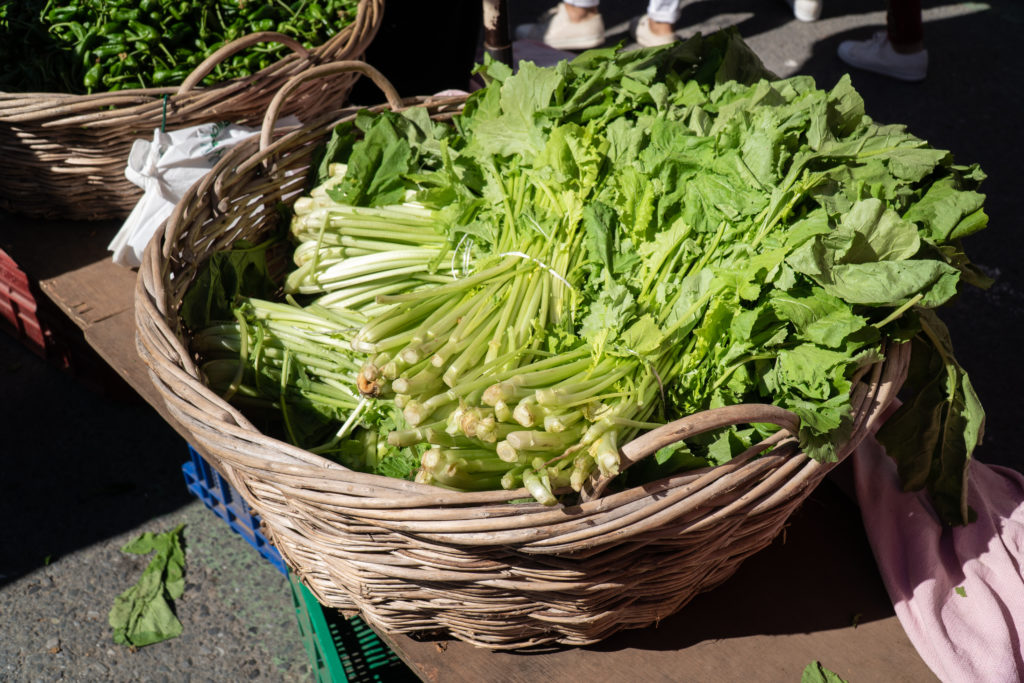
Turnips in the kitchen
- Turnips are spicy and crunchy raw; they are sweet and earthy when cooked. Turnips that mature in cool weather are the sweetest.
- Turnips can be eaten raw, baked, boiled, fried, or mashed. Prepare turnips as you would carrots.
- Cook turnip leaves as edible greens.
- Serve young turnips raw, sliced thin, and dipped into a seasoned sour-cream dressing.
- Serve turnip slices as a side dish with carrot sticks and celery.
- Grate turnips into a tossed green salad and serve with dressing.
- Small turnips can be cooked whole; slice larger turnips to a half-inch thick before cooking.
- Small turnips can be cut into wedges and stir-fried.
- Cook large turnip root y steaming or boiling until tender enough to pierce with a fork.
- Serve sliced, cooked turnips with a cream or white sauce.
- Roast turnips with meat and other vegetables such as potatoes, onions, carrots, sweet potatoes, and garlic.
- Bake turnips until tender, peel, and serve either mashed or with a white sauce.
- Turnip greens are rich in vitamins A, B2, C, and E.
Turnip frequently asked questions
Q: Why do turnip leaves become riddled with small holes?
A: Flea beetles gnaw numerous small holes in turnip leaves. Sprinkle leaves with diatomaceous earth or spay with Sevin.
Q: Why do turnips have plenty of leaves but small roots?
A: Overcrowding or heavy clay soil can cause turnip roots to be small.
Q: What causes small white cottony blotches on the upper surfaces of the leaves with a yellow discoloration beneath?
A: The cause is white rust, a fungus disease that usually does not cause enough damage to require control.
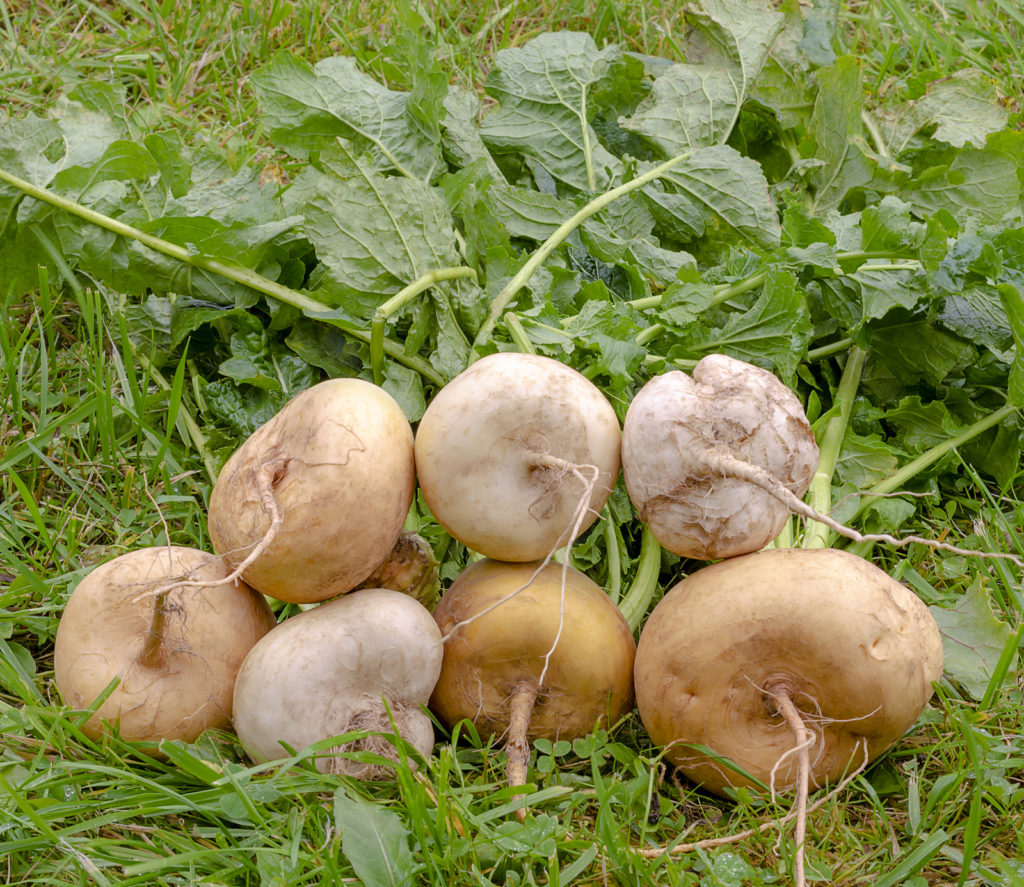
Turnip varieties to grow
Turnips are sometimes classified by the shape of their roots–flat, round, or cylindrical. But there is little or no difference in taste among the several varieties.
- ‘Alamo’: usually grown for greens; harvested cut-and-come-again, leaves can regrow for multiple harvests; tolerates aphids and mosaic virus: 33 days to harvest.
- ‘Amelie’: produces sweet, crisp, white roots from 2 to 3 inches across; bolt-resistant hybrid; 50 to 80 days to harvest.
- ‘Early Purple-Top Milan’: flattened root with white flesh and purple top; among the earliest to mature; 45 days to harvest.
- ‘Golden Ball’: yellow skin and yellow flesh; 60 days to harvest.
- ‘Hakurei: white roots; hybrid; 38 days to harvest.
- ‘Just Right’: white skin, globe-shaped; best grown in spring–prone to bolting; 40 days to harvest.
- ‘Nagasaki Akari Kabu’: purple root; for fresh eating or pickling; 50 days to harvest.
- ‘Purple-Top White Globe’: round roots; bright purple on top, creamy white below; tender and firm flesh; high yield; stores well; 55 days to harvest.
- ‘Royal Crown’: sweet, mild flavor; grows to 4 inches across; hybrid; 50 days to harvest.
- ‘Scarlet Queen’: red roots grow 3 to 4 inches across; 43 days to harvest.
- ‘Shogoin’: mostly grown for green tops that grow to 18 inches tall; white roots are globe-shaped; All-America Selection; 30 days to harvest.
- ‘Tokyo Cross Hybrid’: white roots measure 6 inches across; early maturing; resistant to viral diseases; woody in warm weather; All-America Selection; 35 days to harvest.
- ‘White Lady’: white root, crisp and sweet; hybrid; 35 days to harvest.
More Turnip Varieties. ‘All Top’ (50 days, greens); ‘Amber’ (75 days); ‘De Milan’ (35 days); ‘Gilfeather’ (82 days); ‘Gold Ball’ (45 days); ‘Just Right’ (40-60 days); ‘Market Express’ (38 days); ‘Purple Top White Globe’ (57 days); ‘Red Milan’ (35 days); ‘Royal Crown’ (52 days); ‘Seven Top’ (45 days, greens); ‘Shogoin’ (30-70 days, greens); ‘Tokyo Cross’ (35 days); ‘Tokyo Market’ (35 days); ‘Vertus’ (50-60 days); ‘White Egg’ (50-55 days); ‘White Lady’ (34-45 days); ‘Yorii Spring’ (38 days).
Turnip seed saving
- Turnips are bee-pollinated, self-incompatible, biennial roots that easily cross with other brassicas.
- Turnip and rutabaga varieties will easily cross-pollinate; isolate varieties if you want to save seed. Turnips will also cross-pollinate with Chinese cabbage and oriental mustard, so plant these at a distance if you are going to allow plants to flower.
- To collect seeds, let the best plants overwinter in the garden under heavy mulch; plants will flower the following summer.
- Cut stalks when seedpods turn brown. Dry pods and remove seeds.
About turnips
- Common name. Turnip
- Botanical name. Brassica rapa subsp. rapa
- Family: Brassicaceae (Cruciferae)–cabbage family
- Growth: The turnip is a biennial commonly grown as an annual; in the second year of growth, a turnip produces small yellow flowers and seeds.
- Origin. Northeastern Europe, Eurasia, Siberia
Turnip articles on Harvest to Table:
How to Harvest and Store Turnips
Eight Ways to Cook and Serve Turnips
Three Ways to Cook Turnip Greens
Turnip, Rutabaga, and Kohlrabi Growing Problems Troubleshooting
Garden Planning Books at Amazon:
- Vegetable Garden Grower’s Guide
- Tomato Grower’s Answer Book
- Vegetable Garden Almanac & Planner
- Kitchen Garden Grower’s Guide Vegetable Encyclopedia
More how to grow articles:
Learn how to plant, grow, and harvest your favorite vegetables. Click below for all you need to know.
- Artichoke
- Arugula
- Asparagus
- Beans, Snap
- Beets
- Broad Beans
- Broccoli
- Brussels Sprouts
- Cabbage
- Cantaloupe — Melons
- Cardoon
- Carrots
- Cauliflower
- Celeriac
- Celery
- Chard
- Chayote Squash
- Chickpeas
- Chicory
- Chinese Cabbage
- Collards
- Corn Salad
- Corn, Sweet
- Cresses
- Cucumbers
- Eggplant
- Endive and Escarole
- Fava Beans
- Florence Fennel
- Garbanzo Beans
- Garlic
- Horseradish
- Jerusalem Artichoke
- Kale
- Kohlrabi
- Leeks
- Lettuce
- Lima Beans
- Melons
- Mizuna
- Mustard Greens
- New Zealand Spinach
- Okra
- Onions
- Parsnips
- Peanuts
- Peas
- Peppers
- Potatoes
- Pumpkins
- Radicchio
- Radishes
- Rhubarb
- Rutabaga
- Salsify
- Shallots
- Sorrel
- Southern Peas
- Soybeans
- Spinach
- Squash, Summer
- Squash, Winter
- Sunchokes
- Sweet Potato
- Swiss Chard
- Taro
- Tomatillo
- Tomatoes
- Turnips
- Watermelon
- Zucchini



